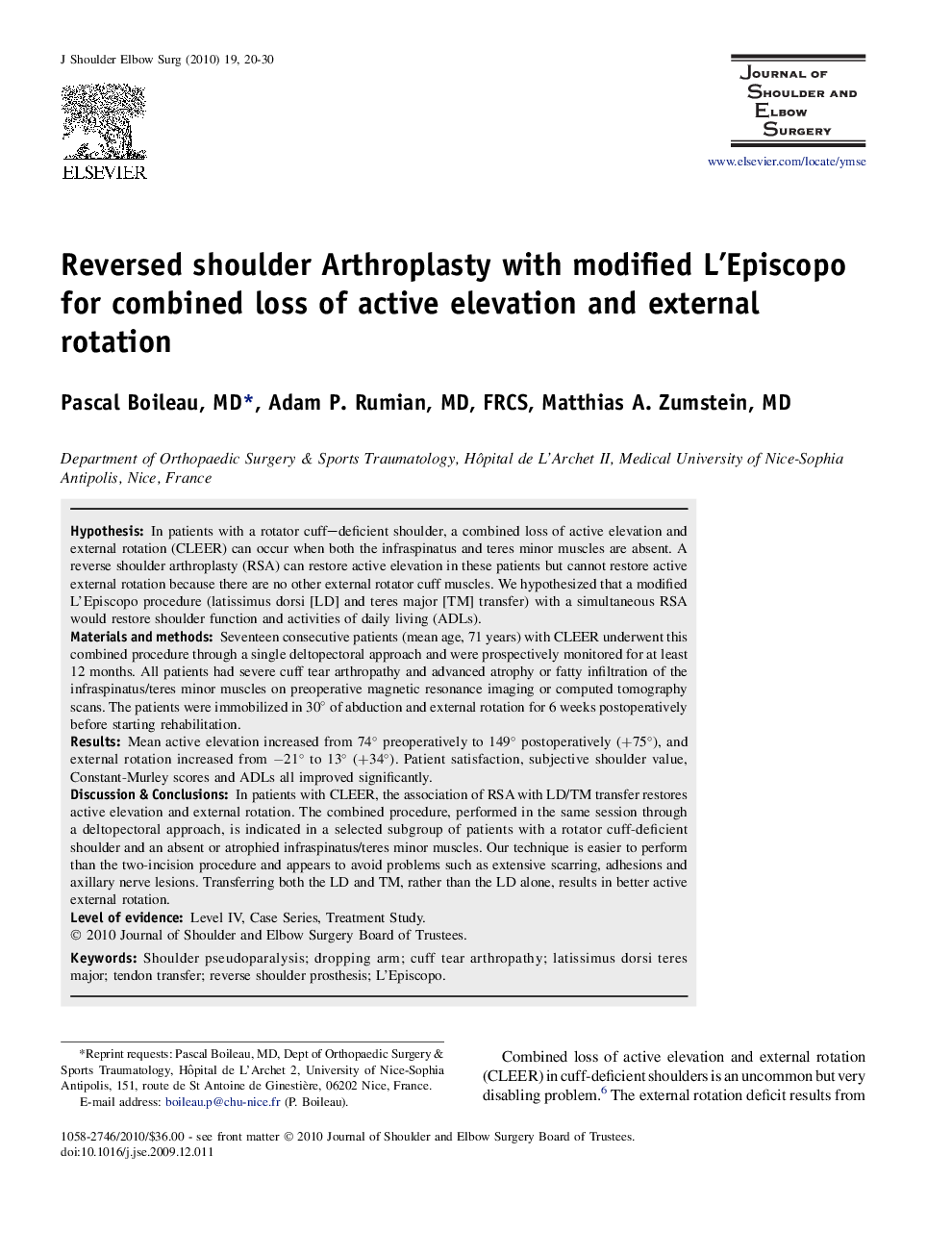| کد مقاله | کد نشریه | سال انتشار | مقاله انگلیسی | نسخه تمام متن |
|---|---|---|---|---|
| 4075520 | 1267041 | 2010 | 11 صفحه PDF | دانلود رایگان |

HypothesisIn patients with a rotator cuff–deficient shoulder, a combined loss of active elevation and external rotation (CLEER) can occur when both the infraspinatus and teres minor muscles are absent. A reverse shoulder arthroplasty (RSA) can restore active elevation in these patients but cannot restore active external rotation because there are no other external rotator cuff muscles. We hypothesized that a modified L'Episcopo procedure (latissimus dorsi [LD] and teres major [TM] transfer) with a simultaneous RSA would restore shoulder function and activities of daily living (ADLs).Materials and methodsSeventeen consecutive patients (mean age, 71 years) with CLEER underwent this combined procedure through a single deltopectoral approach and were prospectively monitored for at least 12 months. All patients had severe cuff tear arthropathy and advanced atrophy or fatty infiltration of the infraspinatus/teres minor muscles on preoperative magnetic resonance imaging or computed tomography scans. The patients were immobilized in 30° of abduction and external rotation for 6 weeks postoperatively before starting rehabilitation.ResultsMean active elevation increased from 74° preoperatively to 149° postoperatively (+75°), and external rotation increased from −21° to 13° (+34°). Patient satisfaction, subjective shoulder value, Constant-Murley scores and ADLs all improved significantly.Discussion & ConclusionsIn patients with CLEER, the association of RSA with LD/TM transfer restores active elevation and external rotation. The combined procedure, performed in the same session through a deltopectoral approach, is indicated in a selected subgroup of patients with a rotator cuff-deficient shoulder and an absent or atrophied infraspinatus/teres minor muscles. Our technique is easier to perform than the two-incision procedure and appears to avoid problems such as extensive scarring, adhesions and axillary nerve lesions. Transferring both the LD and TM, rather than the LD alone, results in better active external rotation.
Journal: Journal of Shoulder and Elbow Surgery - Volume 19, Issue 2, Supplement, March 2010, Pages 20–30